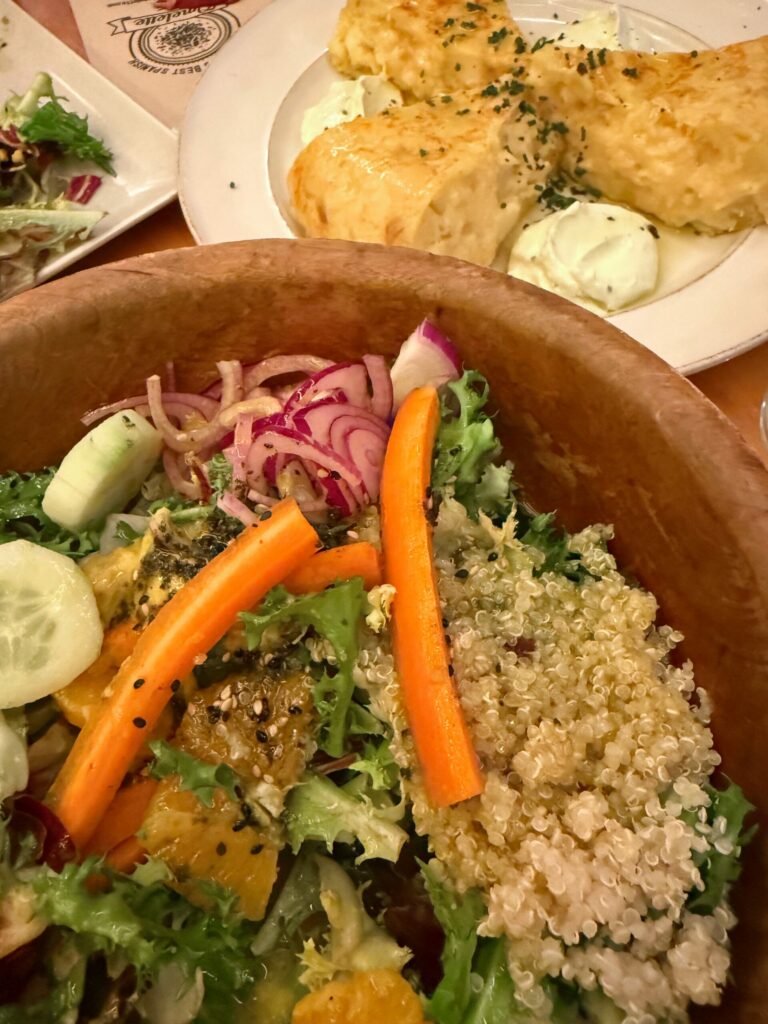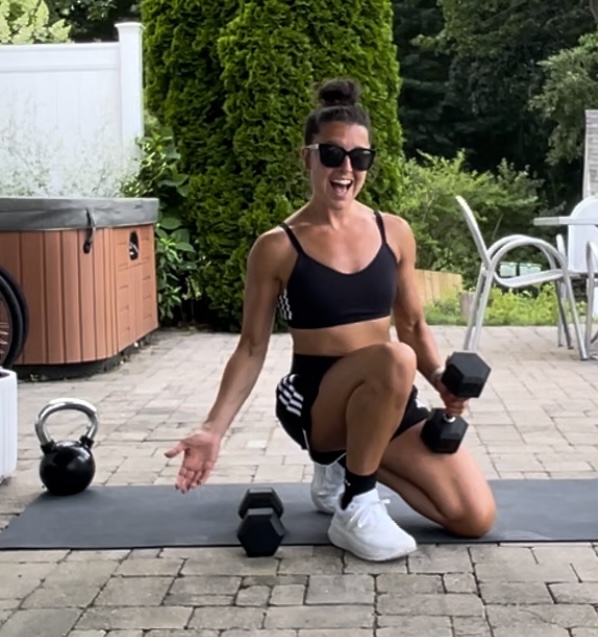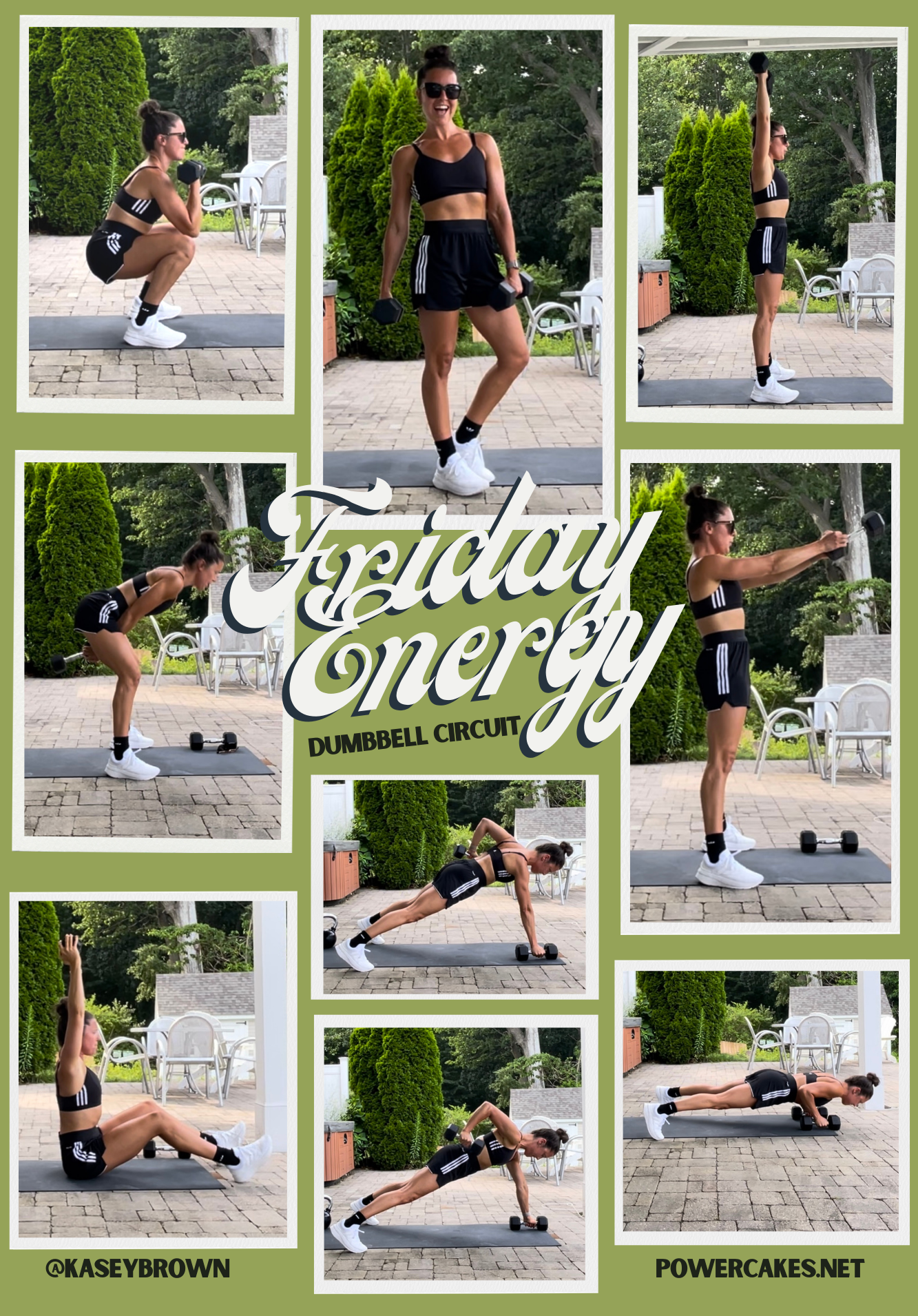The Autoimmune Protocol (AIP) diet is a specialized elimination diet designed to help individuals with autoimmune diseases identify foods that may be triggering inflammation. Often referred to as the autoimmune protocol or autoimmune diet, this approach removes potentially inflammatory foods and slowly reintroduces them to assess their effects. Rooted in the connection between diet and autoimmune disease, the AIP diet plan is based on the idea that certain foods can cause the immune system to mistakenly attack the body’s own tissues. This can worsen symptoms in individuals with conditions like rheumatoid arthritis, Crohn’s disease, lupus, or multiple sclerosis.
For many, the autoimmune protocol diet offers a structured and supportive way to manage symptoms through dietary changes. While it can be effective in reducing inflammation and improving overall well-being, the autoimmune diet protocol is quite restrictive and should be followed under the guidance of a healthcare provider. Those exploring diets for autoimmune disease often turn to the AIP protocol as it emphasizes nutrient-dense, anti-inflammatory foods while eliminating common triggers. Understanding what the AIP diet is and how to build an autoimmune protocol diet food list can help nutrition professionals and autoimmune nutrition specialists better support clients on their healing journey.
Learn How to Become an AFPA Autoimmune Holistic Nutrition Specialist in Less Than 6 Months
Become an expert in helping people living with an autoimmune disease feel better.
What Is the AIP Diet, and What Is It Designed to Do?
The Autoimmune Protocol (AIP) diet is a highly structured elimination diet designed to help individuals with autoimmune conditions identify foods that may trigger inflammation and immune responses. Autoimmune diseases occur when the immune system mistakenly attacks the body’s own healthy tissues, leading to chronic inflammation and a range of symptoms. The AIP diet operates on the premise that certain foods can overstimulate the immune system, contributing to flare-ups and disease progression. By temporarily removing potentially inflammatory foods—such as grains, legumes, dairy, refined sugars, processed foods, and nightshade vegetables—the autoimmune protocol diet aims to calm immune activity and support gut healing.
The elimination phase of the AIP diet typically lasts 30 to 60 days and focuses on nutrient-dense, anti-inflammatory foods such as wild-caught fish, grass-fed meats, leafy greens, fermented vegetables, and bone broth. These foods are chosen for their potential to reduce inflammation and support gut health—key goals of the autoimmune protocol. After this phase, foods are gradually reintroduced one at a time, allowing individuals to track how each item affects their symptoms. For example, someone with rheumatoid arthritis might find that reintroducing nightshades like tomatoes causes joint pain to flare up, signaling a need to avoid them long term. This methodical approach has helped some people with autoimmune conditions like Crohn’s disease and multiple sclerosis gain more control over their symptoms.
Who Is the AIP Diet For?
The autoimmune protocol (AIP) diet is specifically designed for individuals diagnosed with autoimmune diseases—conditions in which the immune system mistakenly attacks healthy tissue, leading to chronic inflammation and damage. This therapeutic elimination diet is also sometimes recommended for individuals with other inflammatory disorders, such as inflammatory bowel disease (IBD) or irritable bowel syndrome (IBS). The AIP diet helps reduce inflammation by removing foods known to trigger immune responses and instead emphasizes nutrient-dense, anti-inflammatory options that support immune regulation and gut health. It is not intended to be a weight loss diet or a general wellness plan for those without autoimmune concerns. The goal of the AIP protocol is to identify personal food triggers and improve symptoms through careful reintroduction after the elimination phase.
That said, the AIP diet may not be suitable for everyone. Individuals with certain medical conditions, nutritional deficiencies, or those who are underweight or at risk of disordered eating should exercise caution. As with any restrictive diet, it’s important to follow the AIP under the guidance of a qualified healthcare provider or registered dietitian. If you don’t have an autoimmune condition but are interested in reducing inflammation, you might explore the anti-inflammatory diet, which focuses on incorporating foods that combat inflammation and omitting those that are known to promote it. This approach is less restrictive than the AIP but still supports long-term health and wellness by emphasizing whole, plant-based, and nutrient-dense foods.
How Diet Can Influence Autoimmune Conditions
Your overall pattern of eating can significantly impact autoimmune symptoms and inflammation levels. Whether or not you follow a specific diet like the AIP or the Mediterranean diet, what you eat—and how often—affects your immune system. Diets high in processed foods, sugar, and unhealthy fats are known to be pro-inflammatory and can worsen autoimmune conditions. On the flip side, nutrient-dense diets rich in vegetables, fruits, healthy fats, and lean proteins help calm inflammation and support immune health.
Even foods generally seen as healthy can trigger immune reactions in some people. For example, whole grains may cause flare-ups in those with celiac disease or gluten sensitivity, which is why they’re excluded during the AIP elimination phase. Nutrients like omega-3 fatty acids (found in fish, flaxseed, and chia) have been shown to reduce inflammation in autoimmune diseases like rheumatoid arthritis. Research also links Mediterranean-style eating to lower rates of autoimmune conditions. Whether through the AIP diet, a diet for autoimmune disease, or a personalized anti-inflammatory plan, food can be a powerful tool in managing autoimmune symptoms and promoting overall well-being.
Dietary patterns—your consistent way of eating—play an important role in influencing inflammation and immune function, both of which are central to the development and management of autoimmune diseases. A person’s diet includes not only the types of food consumed but also the frequency, preparation methods, and combinations of foods eaten over time. Even without following a named plan like the AIP or the Mediterranean diet, most people follow eating patterns influenced by culture, preferences, beliefs, and accessibility. Research shows that these patterns can either contribute to chronic inflammation or help reduce it. Diets high in ultra-processed foods, added sugars, and saturated fats are considered pro-inflammatory and can worsen autoimmune symptoms. In contrast, nutrient-dense diets rich in vegetables, fruits, healthy fats, and lean proteins tend to be anti-inflammatory and help modulate immune responses.
In some cases, individuals may experience immune reactions to foods that are generally considered healthy. For example, while whole grains are often anti-inflammatory for the general population, they can cause inflammation in those with celiac disease or non-celiac gluten sensitivity—making them problematic in a diet for autoimmune disease. This is why gluten-containing foods are excluded in the AIP elimination phase. Additionally, specific nutrients have been shown to help reduce autoimmune-related inflammation. Omega-3 fatty acids—found in salmon, sardines, flaxseed, and chia seeds—have demonstrated positive effects in conditions like rheumatoid arthritis. Diets like the Mediterranean diet, which includes these fats alongside whole grains, legumes, and a high intake of produce, have been linked to lower rates of autoimmune disease. Whether through the AIP diet, a Mediterranean-style eating plan, or a tailored anti-inflammatory approach, dietary choices play a foundational role in managing symptoms and supporting immune resilience.
How Can the AIP Diet Help Manage Autoimmune Conditions?
The autoimmune protocol (AIP) diet can help manage autoimmune conditions by reducing inflammation and identifying trigger foods that may be exacerbating symptoms.
Autoimmune diseases occur when the immune system mistakenly attacks healthy tissues in the body, leading to chronic inflammation and damage. The AIP diet is designed to reduce inflammation by eliminating potentially inflammatory foods and focusing on nutrient-dense, anti-inflammatory foods.
By eliminating foods such as grains, legumes, dairy, processed foods, refined sugars, and nightshade vegetables, the AIP diet removes common triggers of inflammation and helps to calm down the immune system. This reduction in inflammation can lead to improvements in symptoms such as joint pain, fatigue, and digestive issues.
- Reduces inflammation: The AIP diet eliminates potentially inflammatory foods and focuses on nutrient-dense, anti-inflammatory foods. This can help reduce inflammation in the body, which can in turn improve symptoms of autoimmune diseases.
- Identifies trigger foods: The AIP diet involves a period of elimination followed by a gradual reintroduction of foods to identify trigger foods that may be exacerbating symptoms. This can help individuals with autoimmune conditions better understand their triggers and make informed decisions about what foods to include in their diet.
- Improves gut health: The AIP diet focuses on gut-healthy foods such as bone broth, fermented foods, and probiotics. This can help to improve gut health, which is important for overall immune function and inflammation levels in the body. In fact, the AIP diet is commonly used in people with inflammatory bowel disease to help reduce symptoms.
- Supports nutrient intake: The AIP diet encourages the consumption of nutrient-dense foods such as fruits, vegetables, and lean proteins. This can help individuals with autoimmune conditions get the nutrients they need to support their overall health and manage their conditions.
Overall, the AIP diet can be a helpful tool for managing autoimmune conditions by reducing inflammation, identifying trigger foods, improving gut health, supporting nutrient intake, and promoting a healthy lifestyle. However, it is important to note that the AIP diet should not be used as a replacement for medical treatment and should only be undertaken with the guidance of a healthcare professional.
The AIP for Beginners: Steps and Food List
Like most elimination diets, the AIP is a short-term diet aimed at identifying foods that trigger autoimmune response symptoms. In general, elimination diets have three phases: the elimination phase, the reintroduction phase, and the maintenance phase. These phases vary between elimination protocols. Below is the general description of the steps of the AIP protocol.
Along with diet, adequate hydration and regular physical activity are encouraged and help to support immune function.
NOTE: The AIP diet should be undertaken with the guidance of a healthcare professional, particularly if you have a pre-existing medical condition or are taking medication. Additionally, it is important to ensure that you are still getting all the nutrients your body needs while following the diet, which may require supplementation or careful meal planning.
Elimination Phase: Eliminating Potentially Inflammatory Foods
The first step of the AIP diet is the elimination phase, which involves eliminating potentially inflammatory foods for a period of time. This typically lasts 4-6 weeks but can vary depending on individual needs and response time. This time allows your body to stabilize after sustained periods of activated immune mechanisms. Foods that most often cause an immune response and thus are eliminated are:
- Grains (including gluten-containing grains such as wheat, barley, and rye)
- Legumes (including soy, peanuts, and beans)
- Dairy products (including milk, cheese, and yogurt)
- Processed foods (including those with additives, preservatives, and artificial ingredients)
- Refined sugars and sweeteners
- Nightshade vegetables (including tomatoes, eggplants, peppers, and potatoes)
- Alcohol
- Any other foods you suspect you might be sensitive to
During the elimination phase, it is recommended to focus on nutrient-dense, anti-inflammatory foods such as:
- Vegetables (except for nightshades)
- Fruits (in moderation)
- Lean protein sources (such as grass-fed beef, wild-caught fish, and pasture-raised poultry)
- Fermented foods (such as sauerkraut and kimchi)
- Healthy fats (such as olive oil, coconut oil, and avocado)
If you do not see any improvements in symptoms during this time, it is likely that other foods are the ones that are causing immune reactions. Ask family members about sensitivities, where possible, or consult with an allergist, physician, or dietitian specialized in integrative nutrition to identify what these foods might be and start the elimination protocol again, keeping the list above but eliminating those specific foods as well.
Reintroduction Phase: Gradually Reintroducing Foods
After the elimination phase, the next step of the AIP diet is the reintroduction phase. This involves reintroducing foods eliminated in the first phase one at a time to identify any potential trigger foods that may be exacerbating symptoms. This is typically done over a period of several weeks or months, depending on individual needs.
During the reintroduction phase, you should generally reintroduce one food group at a time and wait several days before reintroducing the next food group. This is because most immune reactions that are not due to food allergies take several days to appear.
If you have suspicions as to which foods are causing your symptoms, reintroduce these foods first, one at a time, and wait a week before introducing additional new foods. If you notice symptoms, eliminate the food again immediately and continue the reintroduction process.
Maintenance Phase: Finding Your New Normal
Once trigger foods have been identified, the final step of the AIP diet is the maintenance phase. This involves continuing to avoid trigger foods while incorporating a variety of nutrient-dense, anti-inflammatory foods into the diet in a sustainable fashion. This can help to reduce inflammation and manage autoimmune symptoms over the long term.
Foods “Allowed” While on the AIP Diet
While following the autoimmune protocol (AIP) diet, the focus is on consuming nutrient-dense, anti-inflammatory foods. Here is a list of foods that are generally allowed on the AIP:
- Vegetables (except for nightshades such as tomatoes, peppers, eggplants, and potatoes)
- Fruits (in moderation)
- Lean protein sources such as grass-fed beef, wild-caught fish, and pasture-raised poultry
- Organ meats such as liver
- Fermented foods such as sauerkraut and kimchi
- Healthy fats such as olive oil, coconut oil, and avocado
- Bone broth
- Herbs and spices (except for seeds and nightshades)
- Non-dairy milk alternatives such as coconut milk or nut milk (without additives or sweeteners)
It is important to note that while these foods are generally allowed on the AIP diet, individual needs may vary, and certain foods may need to be limited or avoided based on personal sensitivities or reactions. Additionally, it is important to ensure that you are still getting all of the nutrients your body needs while following the diet, which may require careful meal planning or supplementation.
What Might a Day of Meals Look Like While on the AIP Elimination Phase?
The AIP elimination phase focuses on nutrient-dense, anti-inflammatory foods while avoiding common triggers like grains, dairy, legumes, nightshades, and processed ingredients. If you’re wondering what meals can look like without your usual staples, don’t worry—eating on the AIP diet can still be flavorful, satisfying, and varied. Below is an example of a full day of AIP-friendly meals to inspire your planning.
Breakfast:
- A bowl of sautéed spinach and mushrooms cooked in coconut oil, seasoned with herbs like garlic (if tolerated) and turmeric.
- Half an avocado for healthy fats and fiber.
- A smoothie made with coconut milk, half a banana, and a handful of mixed berries for a nutritious start.
Snack:
- Sliced apple with a tablespoon of coconut butter for a satisfying crunch with a creamy texture.
Lunch:
- Grilled chicken breast seasoned with AIP-compliant herbs and spices.
- Steamed broccoli dressed with olive oil and a squeeze of fresh lemon juice.
- Sweet potato mash made with coconut oil and cinnamon for a sweet and savory flavor.
Snack:
- Carrot sticks with guacamole, a perfect combination for a dose of healthy fats, antioxidants, and vitamins.
Dinner:
- Baked salmon seasoned with dill, lemon slices, and a touch of sea salt, wrapped in parchment paper to lock in moisture and flavor.
- Roasted brussels sprouts tossed in olive oil and seasoned with salt (herbs like rosemary can be added if tolerated).
- Cauliflower rice made with coconut oil and turmeric, providing a flavorful and colorful side dish.
Before bed:
- Herbal tea without caffeine, such as chamomile or ginger tea, to support relaxation and digestion.
It’s important to remember that individual needs and preferences vary, and it’s a good idea to work with a healthcare professional or registered dietitian to ensure you are meeting your nutrient needs while on the AIP elimination phase.
Foods to Avoid on the Autoimmune Protocol Diet
While following the autoimmune protocol (AIP) diet, certain foods are eliminated in order to reduce inflammation and give the body time to heal. Here is a list of foods that are generally avoided on the AIP:
- Grains such as wheat, oats, rice, and corn
- Legumes such as beans, lentils, and peanuts
- Nightshade vegetables such as tomatoes, peppers, eggplants, and potatoes
- Dairy products
- Processed foods and refined sugars
- Artificial sweeteners
- Eggs
- Nuts and seeds
- Vegetable oils such as soybean oil, corn oil, and canola oil
- Alcohol
- Coffee and other caffeinated beverages
It is important to note that while these foods are generally avoided on the AIP diet, individual needs may vary, and certain foods may need to be limited or avoided based on personal sensitivities or reactions. Additionally, it is important to ensure that you are still getting all of the nutrients your body needs while following the diet, which may require careful meal planning or supplementation.
Impact of AIP on Specific Autoimmune Conditions
The AIP diet may be effective for a variety of autoimmune conditions, in which the immune system attacks healthy tissues in the body, causing inflammation and damage. Here are some examples of autoimmune conditions that the AIP diet may be helpful for:
Note that for many of the conditions listed above, there is limited clinical evidence to demonstrate the effectiveness of the AIP in reducing symptoms, since most of the autoimmune response of these conditions, except for IBD, are not primarily triggered by food. However, the introduction and sustained consumption of anti-inflammatory foods as part of the regular diet can help to reduce symptoms. In other words, the “maintenance phase” focusing primarily on foods with anti-inflammatory properties may help the individual manage symptoms.
Additionally, the AIP diet may also be helpful for other inflammatory conditions, such as irritable bowel syndrome (IBS) and chronic fatigue syndrome (CFS). However, it is important to note that the AIP diet may not be suitable for everyone, especially those with certain medical conditions or nutritional deficiencies. It is always a good idea to consult with a healthcare professional or registered dietitian before making any significant changes to your diet.
Health Benefits of the AIP Diet for People with Autoimmune Diseases
The autoimmune protocol (AIP) diet may provide several health benefits for individuals with autoimmune diseases. Here are some potential benefits of the AIP diet:
- Improved autoimmune symptom appearance and management: In people with autoimmune diseases, the purpose of the AIP is to eliminate trigger foods and increase the consumption of anti-inflammatory foods, which could help improve symptoms and overall wellness.
- Reduced inflammation: The AIP diet eliminates foods that are known to trigger inflammation and replaces them with anti-inflammatory foods, such as vegetables, fruits, healthy fats, and nutrient-dense proteins. This can help reduce chronic inflammation, a key factor in the development and progression of autoimmune diseases.
- Improved gut health: The AIP diet focuses on gut-healing foods, such as bone broth, fermented foods, and other nutrient-dense foods that support the growth of beneficial gut bacteria. This can help improve gut health, which is often disrupted in individuals with autoimmune diseases.
- Improved nutrient status: The AIP diet emphasizes nutrient-dense foods that are rich in vitamins, minerals, and other essential nutrients. This can help improve overall nutrient status, which is often compromised in individuals with autoimmune diseases due to malabsorption, gut inflammation, and other factors.
- Improved overall health: By reducing inflammation, improving gut health, and supporting nutrient status, the AIP diet may help improve overall health and reduce the risk of chronic diseases.
It’s important to note that the AIP diet may not be appropriate for everyone, and individual needs and responses may vary. It’s always a good idea to work with a healthcare professional or registered dietitian to determine whether the AIP diet is appropriate for your individual needs and goals.
Can the AIP Diet Improve Gut Health?
The autoimmune protocol (AIP) diet may help improve gut health in people with autoimmune conditions in several ways. Here are some potential mechanisms by which the AIP diet may improve gut health:
- Elimination of common gut irritants: The AIP diet eliminates common gut irritants such as gluten, dairy, soy, and processed foods. This can help reduce inflammation and irritation in the gut, which is essential for gut healing. Note that even though these are among the most common gut irritants, most people, particularly those who do not have an autoimmune condition, are not affected by these foods.
- Increased consumption of nutrient-dense foods: The AIP diet emphasizes the consumption of nutrient-dense foods such as vegetables, fruits, and healthy fats. These foods are rich in vitamins, minerals, and antioxidants, which are essential for gut healing and overall health.
- Increased consumption of fiber: The AIP diet encourages the consumption of fiber-rich foods such as fruits, vegetables, and starchy tubers. Fiber is essential for maintaining healthy gut bacteria and promoting regular bowel movements.
- Incorporation of gut-healing foods: The AIP diet includes foods that are known to support gut healing, such as bone broth and fermented foods. These foods are rich in nutrients such as collagen, glutamine, and probiotics, which can help repair the gut lining and support the growth of beneficial gut bacteria.
- Reduction in gut dysbiosis: Dysbiosis, or an imbalance of gut bacteria, is common in individuals with autoimmune diseases. The AIP diet can help restore balance to the gut microbiome by eliminating foods that promote the growth of harmful bacteria and increasing the consumption of foods that support the growth of beneficial bacteria.
In summary, the AIP diet may improve gut health by reducing gut irritants, increasing consumption of nutrient-dense foods and fiber, incorporating gut-healing foods, and reducing gut dysbiosis. Improved gut health can have far-reaching effects on overall health, as the gut plays a critical role in digestion, nutrient absorption, immune function, and more.
Does the AIP Diet Decrease Inflammation?
Yes, the autoimmune protocol (AIP) diet is designed to reduce inflammation in the body, specifically in people with autoimmune conditions. The AIP diet eliminates foods that are most likely to trigger the immune system and cause inflammation, such as grains, legumes, dairy, processed foods, and refined sugars. These foods can be difficult for some people to digest and can irritate the gut lining, leading to increased inflammation and immune system activation.
Note, however, that the purpose of the AIP is to identify which specific foods trigger symptoms of inflammatory responses. If you don’t have an autoimmune condition but are interested in eating a diet rich in anti-inflammatory foods, consider learning more about the anti-inflammatory diet, which is focused on the consumption of anti-inflammatory foods and the reduction of pro-inflammatory foods.
On the AIP diet, these inflammatory foods are replaced with nutrient-dense, anti-inflammatory foods that support overall health and healing, such as:
- Vegetables (except for nightshades)
- Fruits (in moderation)
- High-quality meats, fish, and seafood
- Healthy fats from sources such as coconut oil, olive oil, and avocado
- Bone broth and other gut-healing foods
By eliminating inflammatory foods and replacing them with nutrient-dense, anti-inflammatory foods, the AIP diet may help to reduce inflammation in the body and improve symptoms of autoimmune conditions and other inflammatory conditions. However, it is important to note that individual needs and responses may vary, and it’s always a good idea to work with a healthcare professional or registered dietitian to ensure that the AIP diet is appropriate for your individual needs.
Is the AIP Diet Easy to Follow?
Most people find that the AIP diet is not an easy diet to follow. It requires a significant change in dietary patterns, which is why it is not designed for everyone. Those who take on the AIP are often people whose symptoms are very difficult to manage and who have high motivation to identify the cause of the symptoms.
Anyone with an autoimmune disease who is interested in determining what foods might be potentially exacerbating symptoms and learning to follow an eating pattern rich in anti-inflammatory foods can follow the AIP with the support of a specialized health professional.
The Bottom Line on AIP
The autoimmune protocol (AIP) diet is a powerful tool that may help individuals with autoimmune diseases reduce inflammation, improve gut health, and support overall health and wellbeing. By eliminating inflammatory foods and replacing them with nutrient-dense, anti-inflammatory foods, the AIP diet provides a framework for improving nutrition and reducing inflammation, two key factors in the development and progression of autoimmune diseases. While the AIP diet may not be appropriate for everyone, it can be a valuable tool for those looking to improve their health and manage autoimmune conditions. As always, it’s important to work with a healthcare professional or registered dietitian to determine whether the AIP diet is appropriate for your individual needs and goals.
Learn How to Become an AFPA Autoimmune Holistic Nutrition Specialist in Less Than 6 Months
Become an expert in helping people living with an autoimmune disease feel better.
Written by
Sasha Aparicio, M.S.
Sasha Aparicio, MS, is a Food and Nutrition Anthropologist with a BA from Tufts University, and an MS in Food and Nutrition from the University of San Carlos. Sasha is a Certified Nutrition Coach and an experienced adult educator, university professor, instructional designer, program director, content writer, researcher, and health content strategist. Over the course of her career, she has worked in international development, public health, consumer qualitative research, and nutrition program management, among others.
References
- https://www.mdpi.com/1420-3049/26/4/985
- https://www.ingentaconnect.com/content/ben/emiddt/2014/00000014/00000004/art00003
- https://academic.oup.com/crohnscolitis360/article/1/3/otz019/5544574
- https://www.cureus.com/articles/18455#!/
- https://escholarship.org/content/qt13m8d574/qt13m8d574.pdf
- https://www.mdpi.com/2673-9992/18/1/10
- https://www.mdpi.com/1422-0067/23/9/5144
- https://www.sciencedirect.com/science/article/pii/S0899900712000500
- https://cdn.mdedge.com/files/s3fs-public/issues/articles/ct104002007_si.pdf
- https://www.science.org/doi/abs/10.1126/science.aau5812
- https://onlinelibrary.wiley.com/doi/full/10.1111/imm.12765
- https://www.mdpi.com/2072-6643/11/8/1806
The post AIP (Autoimmune Protocol) Diet: The Definitive Guide appeared first on AFPA.



































